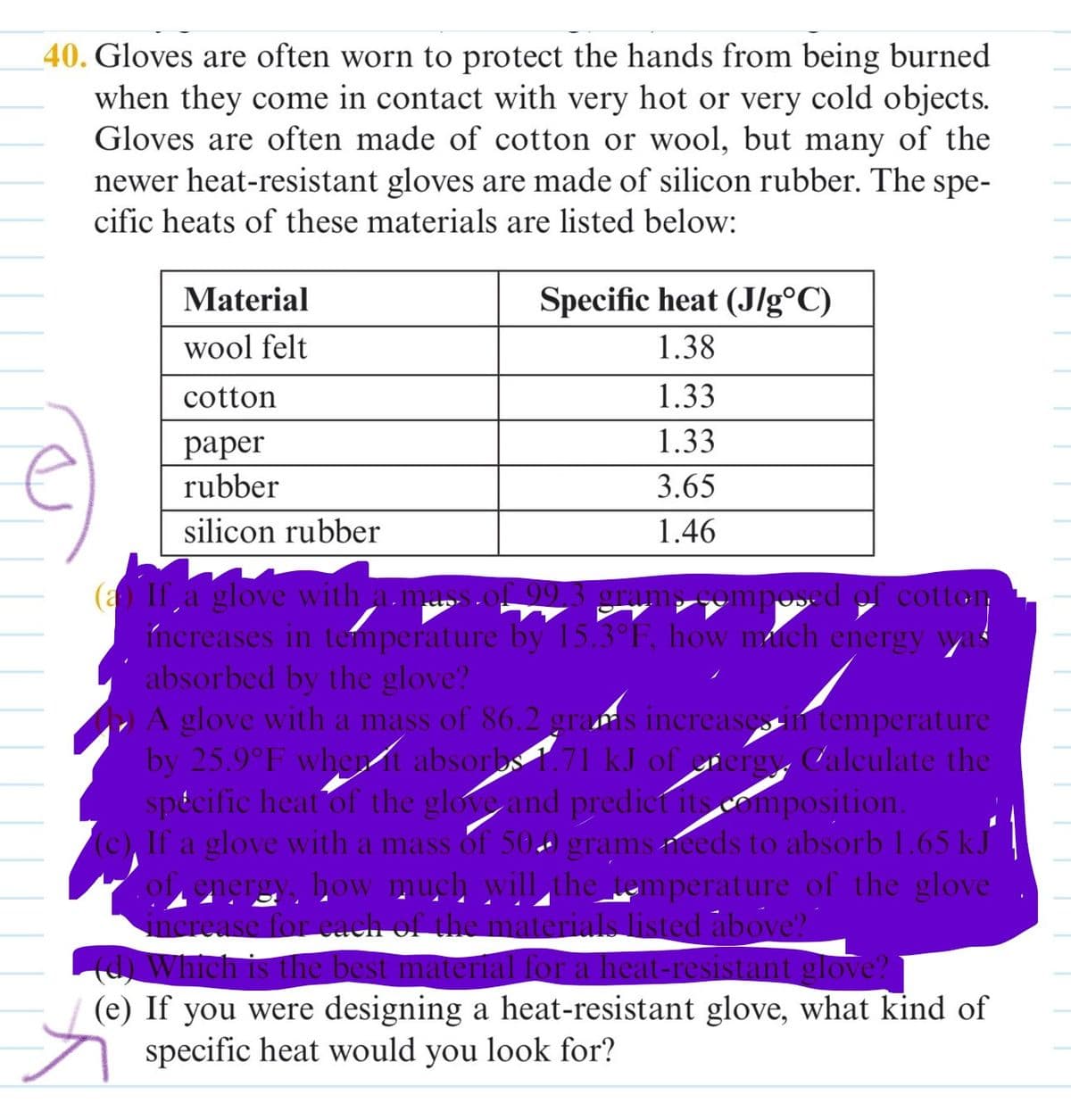40. Gloves are often worn to protect the hands from being burned when they come in contact with very hot or very cold objects. Gloves are often made of cotton or wool, but many of the newer heat-resistant gloves are made of silicon rubber. The spe- cific heats of these materials are listed below: Material Specific heat (J/g°C) wool felt 1.38 cotton 1.33 1.33 раper rubber 3.65 silicon rubber 1.46 ( If,a glove with a.mass ncreases in temperature by 15.3°F, how mch energy was absorbed by the glove? A glove with a mass of 86.2 grams increases in temperature by 25.9°F whet absorbs 1.71 kJ of erergy. Calculate the specific heat of the glove and predict its composition. (c) If a glove with a mass of 50.0 grams needs to absorb 1.65 kJ Zofrenergy, how much will the temperature of the glove increase for caeh of the materials listed above? (d) Which is the best material for a heat-resistant glove? (e) If you were designing a heat-resistant glove, what kind of specific heat would you look for? 99.3 grams omposed of cotten
Thermochemistry
Thermochemistry can be considered as a branch of thermodynamics that deals with the connections between warmth, work, and various types of energy, formed because of different synthetic and actual cycles. Thermochemistry describes the energy changes that occur as a result of reactions or chemical changes in a substance.
Exergonic Reaction
The term exergonic is derived from the Greek word in which ‘ergon’ means work and exergonic means ‘work outside’. Exergonic reactions releases work energy. Exergonic reactions are different from exothermic reactions, the one that releases only heat energy during the course of the reaction. So, exothermic reaction is one type of exergonic reaction. Exergonic reaction releases work energy in different forms like heat, light or sound. For example, a glow stick releases light making that an exergonic reaction and not an exothermic reaction since no heat is released. Even endothermic reactions at very high temperature are exergonic.

Trending now
This is a popular solution!
Step by step
Solved in 2 steps









